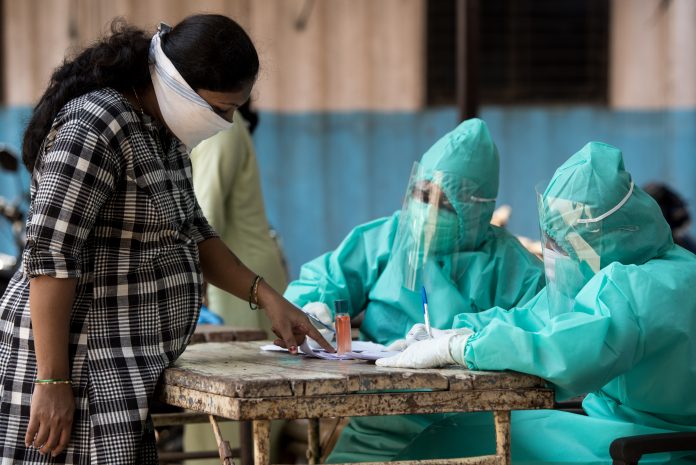Rachel Thrasher, Research Fellow at the Global Development Policy Center in Boston, explains how the new US stance could change the TRIPS waiver debate
In a stunning move, the United States has agreed to back the waiver of intellectual property rights under the WTO’s Agreement on Trade-Related Aspects of Intellectual Property proposed by South Africa and India back in October 2020 and slowly gaining acceptance with the support of more than 100 countries over the past 7 months. United States Trade Representative Katherine Tai stated publicly,“[w]e are for the waiver at the WTO, we are for what the proponents of the waiver are trying to accomplish, which is better access, more manufacturing capability, more shots in arms.”
On the heels of this surprising announcement, several other countries and the European Union have signalled their willingness to begin text-based negotiations for such a waiver. Meanwhile, pressure is mounting for Australia and others that have hitherto refused to engage in negotiations.
‘We shall find a pragmatic way forward’
Earlier that same day, WTO Director General, Dr. Ngozi Okonjo-Iweala indicated a hopeful posture toward a decision by South Africa and India to submit a revised waiver proposal: “Once we can sit down with an actual text in front of us, we shall find a pragmatic way forward, acceptable to all sides that allow the kinds of answers that our developing country members are looking at with respect to vaccines, whilst at the same time looking at research and innovation and how to protect them.”
South Africa’s and India’s willingness to revise the proposal, together with the U.S. political support and agreement to engage in text-based negotiations places those WTO member countries closer to a collective solution than they have been in the past year. Scientists at the World Health Organization are likewise encouraged, calling this a potential “game changer in the fight against the pandemic,” if accompanied by scaling up regional manufacturing capacity.
Of course, not everyone is so enthusiastic. Leaders in the U.S. pharmaceutical industry have been breathing ominous warnings that this waiver, far from increasing vaccine access will make them less available, decreasing incentives for public-private partnerships, stifling innovation and ultimately making us more vulnerable to pandemics in the future. Some have even argued that China is the sole beneficiary of this waiver, as it has been waiting in the wings, so to speak, to dismantle global intellectual property rules and is poised to immediately implement U.S. vaccine technology.
Cautious optimism makes sense right now
Nevertheless, experts are right to be (cautiously) optimistic at the U.S. announcement. As developed countries roll out rapid mass vaccination campaigns, the developing world is trailing far behind. In Africa, most countries have only vaccinated a fraction of a percent. In India, where the largest outbreak of national COVID-19 cases is unfolding right now, less than 10 percent of the population has received even one dose of a vaccine. Even India’s vaccination rate is partly due to widely criticized export controls which prevented its vaccines from going to other developing countries. Vaccine apartheid is real, and the waiver makes it possible to end the struggle over increasingly smaller pieces of the vaccine “pie” and increase the overall size of the pie instead. As such, it is a necessary first step toward more equitable and efficient vaccine access.
What comes after this moment?
There are, of course, many further obstacles to accomplishing the shared goal of “more shots in arms”.
Many countries are not yet ready to take the policy u-turn initiated by the United States. WTO decision-making rules require at least three-quarters of all WTO members to agree to such a waiver, with a preference for a consensus. Proponents of the waiver have been unwilling to by-pass the traditional consensus based decision-making mechanism, perhaps in the interest of long-term institutional cooperation. On the other hand, without the large vaccine-innovating countries on board, a waiver of TRIPS rules for patented COVID-19 products would be much less effective. As a major world economy, the United States is likely to influence others, but it is not the only country that has expressed discomfort with the waiver, and the EU will need some convincing before it will do more than “discuss” the U.S.’s new position. Indeed, many countries which previously blocked the waiver have become accustomed to a U.S. reluctance to engage at the WTO, and will struggle to pivot their own statements and policies.
Once the last few holdouts have decided to come to the table to negotiate the text of a waiver, many experts predict long months of discussions over the exact scope and duration of the agreement. At the very outset, it seems that the U.S. support is more of a counter-proposal to the original submission. Rather than reaching all products (diagnostics, equipment, treatment and vaccines), it appears limited to vaccine patents. In addition to deciding which products would be covered, WTO members will have to agree about which TRIPS Agreement provisions will be waived – whether it covers only patent protection or also protected trade secrets and research data. Finally, the duration of the waiver is likely to be contentious. Initial proponents of the waiver will attempt to extend it until all or most of the world has been vaccinated, while opponents will seek a shorter time period, or a lower percentage of global vaccine coverage.
What about countries waiting to use the waiver?
In the meantime, countries seeking to implement the waiver will need to prepare their domestic legislative or administrative processes to put it into place rapidly as soon as the text is finalized. It is important to note that the U.S. and Europe need not waive intellectual property protection within their domestic context for this to work. Innovators will retain monopoly rights (and profits) within those countries.
They will, however, need to take the lead in providing incentives for pharmaceutical companies to transfer technology and know-how to potential manufacturers worldwide. Although several of the current vaccines in the market use more traditional vaccine technology (like the viral vector and protein subunit types), which existing generic vaccine producers would be able to replicate, newer technologies like the messenger RNA vaccines (Moderna and Pfizer/BioNTech) are much more complex to produce. Without strong government leadership and incentives, acquiring that technology and know-how would be much more difficult – some might say impossible.
Other remaining bottlenecks include global shortages in vaccine inputs and funding gaps for countries seeking to build up new and expand existing capacity for vaccine production. The latter challenge could be addressed through accessing unused special drawing rights at the IMF to finance vaccine production capacity. Moreover, researchers at the Boston University Global Development Policy Center show that the IMF and other regional financial arrangements have lent out only a small fraction of their funds in the past year, suggesting that more lending might be available to finance this global effort.
Despite the obstacles ahead, the new U.S. position toward a TRIPS Waiver has the potential to set the global stage for greater and more equitable access to COVID-19 vaccines. Now the hard work can begin.
Rachel Thrasher is a Researcher with the Boston University Global Development Policy Center. She received a JD and a Master’s degree in International Relations, both from Boston University. She works on policy issues related to trade and investment agreements, trade law and development, and access to medicines.











